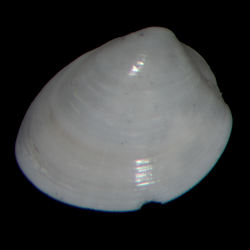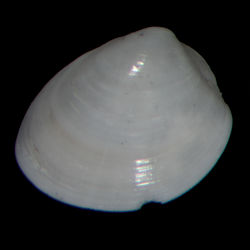
Nuculidae

Overview
Common name: Nut clams
Key morphological features: The Nuculidae are small sized, up to 50 mm. The shell is equivalve, with an oval, wedge, or trigonal shape. The posterior end is angled, while the anterior end is longer and rounded. The shell is composed of aragonite and exterior sculpture is typically smooth, with occasional commarginal and radial striations. Valve interiors are nacreous and the pallial line is faint but uninterrupted. The interior shell margins are either denticulate or smooth. Species of Nuculidae are isomyarian, and both well-defined adductor muscles are equal in size. The taxodont hinge has chevron-shaped anterior and posterior teeth separated by a deep, narrow resilifer. Source: Mikkelsen, P.M., and Bieler, R. 2008. Seashells of Southern Florida: Bivalves. Princeton, New Jersey: Princeton University Press. 503 pp.
Geological range: Ordovician to Recent (Mikkelsen & Bieler, 2008).
Geographic distribution: A distributional map for modern Nuculidae may be accessed from OBIS. A distributional map for ancient Nuculidae may be accessed from the Paleobiology Database.
Diversity: There are 168 recognized living species of Nuculidae and 11 genera (WoRMS database, unvetted). The Paleobiology Database recognizes 21 fossil genera and 278 fossil species of Nuculidae (unvetted).
Paleoecology: The Nuculidae are marine deposit feeders that also suspension feed to supplement their diet, especially as juveniles. They live infaunally in coarse shallow sand or mud, and actively burrow through the substrate with their planar foot. Nuculids tend to rest just beneath the sediment surface of the substrate, allowing a current to flow through their siphons. Source: Mikkelsen and Bieler (2008).
Phylogenetic status: Unknown
